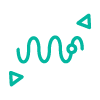Certus Mini D
Certus Mini D is a miniature dual antenna GNSS-aided INS that provides accurate position, velocity, acceleration, and orientation under the most demanding conditions.
Roll & Pitch
0.1 °
Heading (GNSS)
0.1 °
RTK Positioning
10 mm
Update Rate
1000 Hz



Certus Mini D (Dual Antenna) combines temperature-calibrated accelerometers, gyroscopes, pressure sensor and magnetometers with an advanced dual antenna GNSS receiver. These are coupled in an AI-based fusion algorithm to deliver accurate and reliable navigation data. The Certus Mini features low SWaP-C (Size, Weight, Power and Cost) and multiple communication interfaces for easy integration. It includes license-free L1/L5 multi-constellation GNSS and is available in both rugged and OEM variants. The OEM variant offers deep system integration, layout flexibility, and reduced SWaP-C.
Certus Mini N is also available with a single antenna GNSS receiver.


Features


AI Navigation Algorithm
The Certus Mini range features Advanced Navigation’s revolutionary AI neural network sensor fusion algorithm.
The algorithm was designed for control applications and has a high level of health monitoring and instability prevention to ensure stable and reliable data.

High-Performance MEMS
The Certus Mini range contains high performance MEMS sensors that are put through Advanced Navigation’s intensive 8 hour temperature calibration process.
This provides the highest accuracy possible from this sensor class and outputs consistent accuracy over the full temperature range from -40°C to 85°C.

Reliability
The Certus Mini range has been designed from the ground up for mission-critical control applications where reliability is essential.
Built using a safety-oriented real-time operating system, all software is designed and tested to high safety standards with fault-tolerance in mind.
The Certus Mini range is designed, manufactured and tested to military standards.

L1/L5 Multi Constellation RTK GNSS
The Certus Mini D supports L1/L5 dual frequencies, and GPS, GLONASS, Galileo, BeiDou and NavIC constellations.
Access to multiple constellations and frequencies provides enhanced accuracy, availability and performance even in difficult environments such as multi-storey urban canyons.
The GNSS receiver has 10 mm position accuracy with real-time RTK or post-processed PPK.

Dual Antenna Heading
The Certus Mini D provides a high accuracy heading solution using two GNSS antennas. The Certus Mini D rapidly and consistently maintains an accurate heading without the need for magnetic calibration and is unaffected by magnetic interference.
Additionally, the system can determine heading while stationary. This makes it well-suited to applications where there is limited, or no, positional movement.
Applications

Surveying

UAVs

UGVs

Robotics

Marine

Motorsport
Specifications
Navigation
GNSS
Hardware
Communication
Sensors
Accelerometers
Gyroscopes
Magnetometers
Pressure
Downloads
Datasheet
Rugged 3D Model
OEM Design Models
Version 1.0.1
17 Jan 2025
Contains Certus Mini OEM 3D model .step files, PCB footprint, PCB Schematic, Development PCB 3D Model .step file.
Certus Mini Manager
Version 7.5
25 Nov 2024
The Manager is the software provided for testing, configuration and logging with Certus Mini. Java 11 is required to run the application. Adoptium JRE 11 is the recommended Java installer. Please see the reference manual for more information.
Certus Mini D Firmware
Version 1.01
23 Oct 2024
Firmware for Certus Mini D hardware. This can be loaded onto the Certus Mini D using the Certus Mini Manager software. The change log can be found in the Certus Mini reference manual.
Certus Mini D SDK
Version 7.3
28 Aug 2024
The Certus Mini D SDK provides example source code for interfacing with Certus Mini D through the AN Packet Protocol. The languages provided are C/C++, Java, and .Net C#.
Certus Mini Whitepaper
From deep mining pits and dense urban canyons, to tunnels and tree-covered terrain, GNSS signals often degraded or denied, leaving conventional navigation unreliable. This whitepaper explores how Advanced Navigation’s Certus Mini INS and AHRS series—combining Dual Band GNSS with advanced sensor fusion—delivers accurate positioning in the toughest conditions. View now to see big performance in a mini package.
View Whitepaper
Related Articles


Advanced Navigation unveils new Certus Mini series with INS and AHRS
26 September 2024
View Full Media
The Future of Navigation is Mini: Unveiling the Certus Mini Series with INS and AHRS
25 September 2024
View Post
